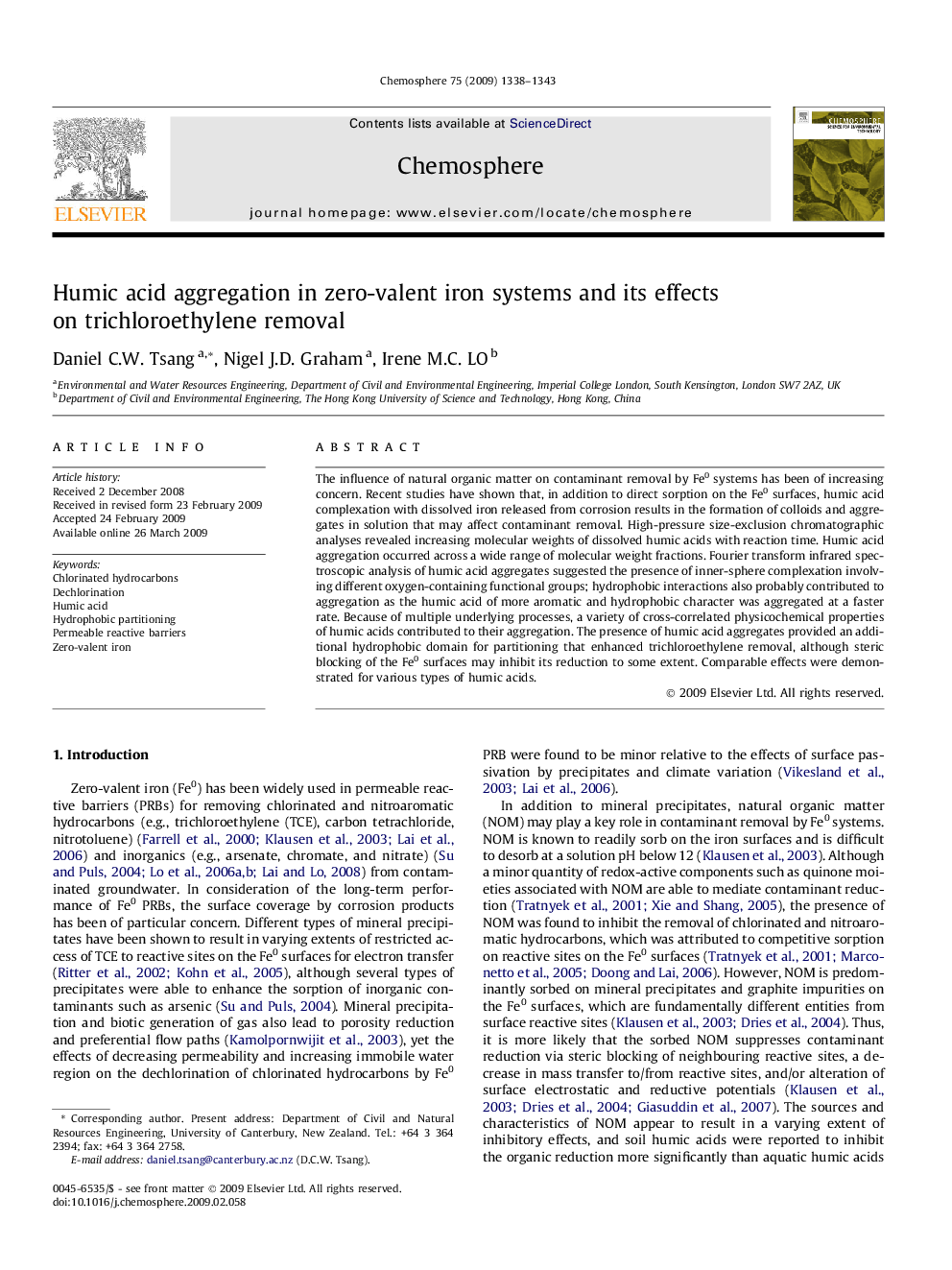| Article ID | Journal | Published Year | Pages | File Type |
|---|---|---|---|---|
| 4412409 | Chemosphere | 2009 | 6 Pages |
The influence of natural organic matter on contaminant removal by Fe0 systems has been of increasing concern. Recent studies have shown that, in addition to direct sorption on the Fe0 surfaces, humic acid complexation with dissolved iron released from corrosion results in the formation of colloids and aggregates in solution that may affect contaminant removal. High-pressure size-exclusion chromatographic analyses revealed increasing molecular weights of dissolved humic acids with reaction time. Humic acid aggregation occurred across a wide range of molecular weight fractions. Fourier transform infrared spectroscopic analysis of humic acid aggregates suggested the presence of inner-sphere complexation involving different oxygen-containing functional groups; hydrophobic interactions also probably contributed to aggregation as the humic acid of more aromatic and hydrophobic character was aggregated at a faster rate. Because of multiple underlying processes, a variety of cross-correlated physicochemical properties of humic acids contributed to their aggregation. The presence of humic acid aggregates provided an additional hydrophobic domain for partitioning that enhanced trichloroethylene removal, although steric blocking of the Fe0 surfaces may inhibit its reduction to some extent. Comparable effects were demonstrated for various types of humic acids.
